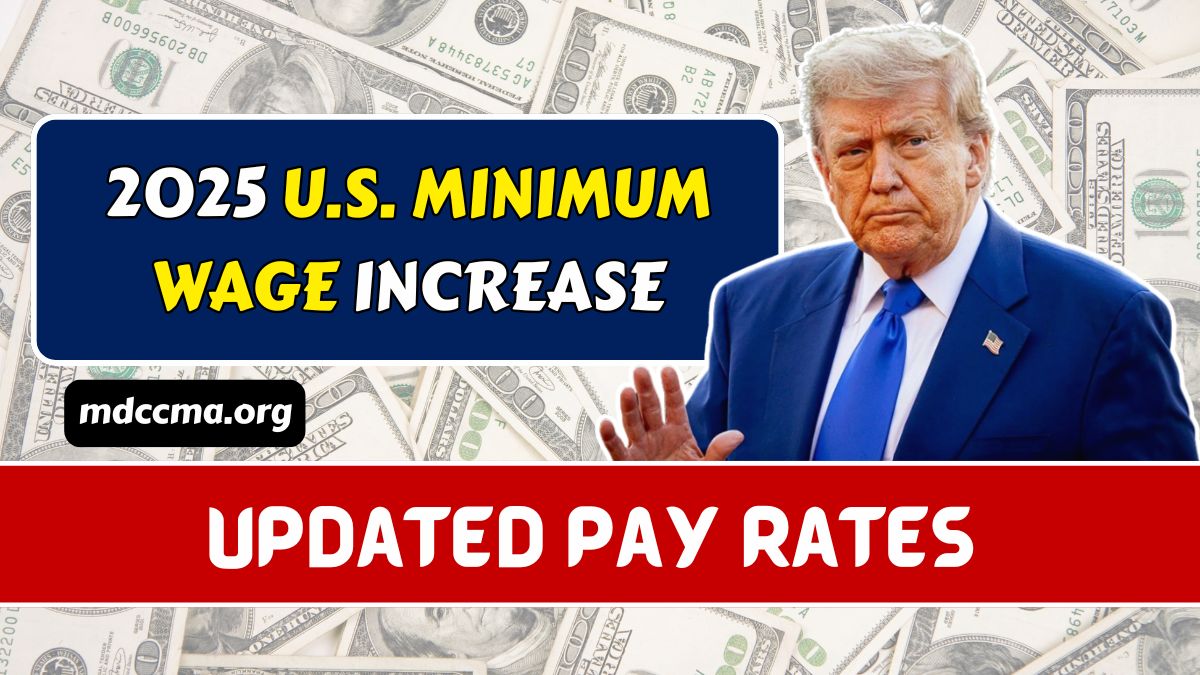As living costs continue to surge across the United States, the 2025 minimum wage increases stand out as one of the most notable economic changes of the year.
Beginning November 3, 2025, numerous states and local governments will enforce updated hourly wage standards designed to offer fairer compensation that reflects rising inflation, housing costs, and market conditions.
This article breaks down the new wage structure, state-by-state changes, and their impact on workers and employers.
Why the Minimum Wage Is Increasing in 2025
The widespread minimum wage adjustments set for 2025 are the result of sustained economic pressure on millions of Americans.
With rent, groceries, and transportation expenses climbing steadily, state lawmakers and labor advocates have demanded legislative action that strengthens the financial security of low-income communities.
Several states follow inflation-indexed wage formulas, meaning annual increases occur automatically to match cost-of-living trends. Others are continuing multi-year wage plans that were approved in previous legislative cycles.
New Wage Rates Taking Effect in 2025
Minimum wage rates differ widely depending on state and local rules. While many jurisdictions will apply new rates on November 3, 2025, others will introduce changes earlier in the year.
Below is a representative overview of key 2025 wage updates:
2025 Minimum Wage Chart
| State / Jurisdiction | New Minimum Wage (2025) | Effective Date |
|---|---|---|
| California | $17.50/hr | Nov 3, 2025 |
| Washington | $17.20/hr | Jan 1, 2025 |
| New York (NYC) | $18.00/hr | Nov 3, 2025 |
| Illinois | $15.80/hr | Jan 1, 2025 |
| Florida | $14.50/hr | Nov 3, 2025 |
| New Jersey | $16.00/hr | Jan 1, 2025 |
| Massachusetts | $17.00/hr | Jan 1, 2025 |
| Colorado | $15.75/hr | Jan 1, 2025 |
| Arizona | $15.50/hr | Jan 1, 2025 |
| Washington, D.C. | $18.50/hr | Jul 1, 2025 |
Note: Final amounts may vary based on city or county-level ordinances.
How Higher Minimum Wages Will Affect Workers
For millions of Americans working in low-pay sectors, the 2025 wage increases are expected to significantly improve day-to-day financial stability. Key benefits include:
- Higher take-home income
- Improved ability to cover essential expenses like rent, groceries, and commuting
- Better financial footing for families
- Potential decrease in reliance on public assistance programs
The change is especially important for workers in hospitality, retail, food service, and other hourly service industries, which have been hit hardest by years of stagnant wage growth and persistent inflation.
Impact on Employers and Small Businesses
While higher wages support workers, they also introduce financial challenges for businesses—particularly small and mid-sized employers. The new wage rules may require companies to:
- Update payroll and HR systems
- Reevaluate staffing levels or scheduling
- Adjust pricing to offset increased labor expenses
- Invest in efficiency tools or automation
Even with added pressures, higher wages often improve staff retention, morale, and productivity, lowering long-term turnover costs.
Why Many States Chose November 3, 2025
The decision by several states to implement wage increases on November 3 is influenced by:
- Alignment with state or fiscal-year policy updates
- A transition window for employers to meet compliance standards
- The arrival of updated economic data tied to inflation
- Multi-state coordination for synchronized implementation
This timing helps streamline administrative processes and gives businesses adequate notice before new rates take effect.
Key Takeaways
- 2025 minimum wage adjustments represent a major nationwide shift in compensation standards.
- Many Americans will see increased earnings beginning November 3, 2025.
- While the increases aim to improve affordability for workers, employers must adapt to higher labor expenses and operational changes.
- These adjustments reflect ongoing efforts to ensure a more equitable, inflation-adjusted wage system across the U.S.
The upcoming 2025 wage increases underscore the country’s broader push to balance fair compensation with business viability.
As inflation and cost-of-living pressures persist, the November 3, 2025 minimum wage updates serve as a crucial measure to strengthen economic stability for workers while encouraging employers to modernize and plan strategically.
Staying informed about these changes ensures compliance, preparedness, and a more sustainable workforce for the years ahead.
FAQs
Washington, D.C. leads with $18.50/hr, followed by New York City and several West Coast states with rates above $17 per hour.
No. Some states implement changes on January 1, while others follow mid-year schedules depending on local laws.
Some states offer grants, tax credits, or phased-in increases, but support varies widely by jurisdiction.
